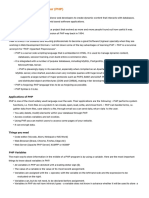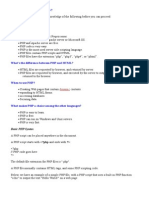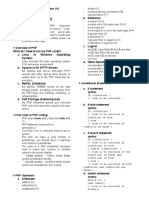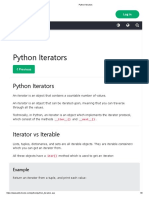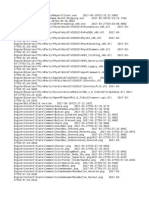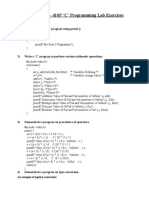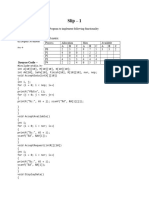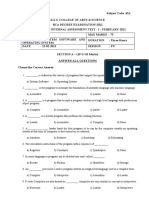0% found this document useful (0 votes)
33 views58 pagesWeb Lab Notes - Upto Form Handling
The document provides an overview of server-side scripting with a focus on PHP, detailing its role in web development, the LAMP stack, and various PHP features such as variables, operators, conditional statements, loops, arrays, and functions. It also covers PHP superglobals for handling form data and validation. Examples are provided throughout to illustrate PHP syntax and functionality.
Uploaded by
Renju Hhygfdo KCopyright
© © All Rights Reserved
We take content rights seriously. If you suspect this is your content, claim it here.
Available Formats
Download as PDF, TXT or read online on Scribd
0% found this document useful (0 votes)
33 views58 pagesWeb Lab Notes - Upto Form Handling
The document provides an overview of server-side scripting with a focus on PHP, detailing its role in web development, the LAMP stack, and various PHP features such as variables, operators, conditional statements, loops, arrays, and functions. It also covers PHP superglobals for handling form data and validation. Examples are provided throughout to illustrate PHP syntax and functionality.
Uploaded by
Renju Hhygfdo KCopyright
© © All Rights Reserved
We take content rights seriously. If you suspect this is your content, claim it here.
Available Formats
Download as PDF, TXT or read online on Scribd
/ 58
















